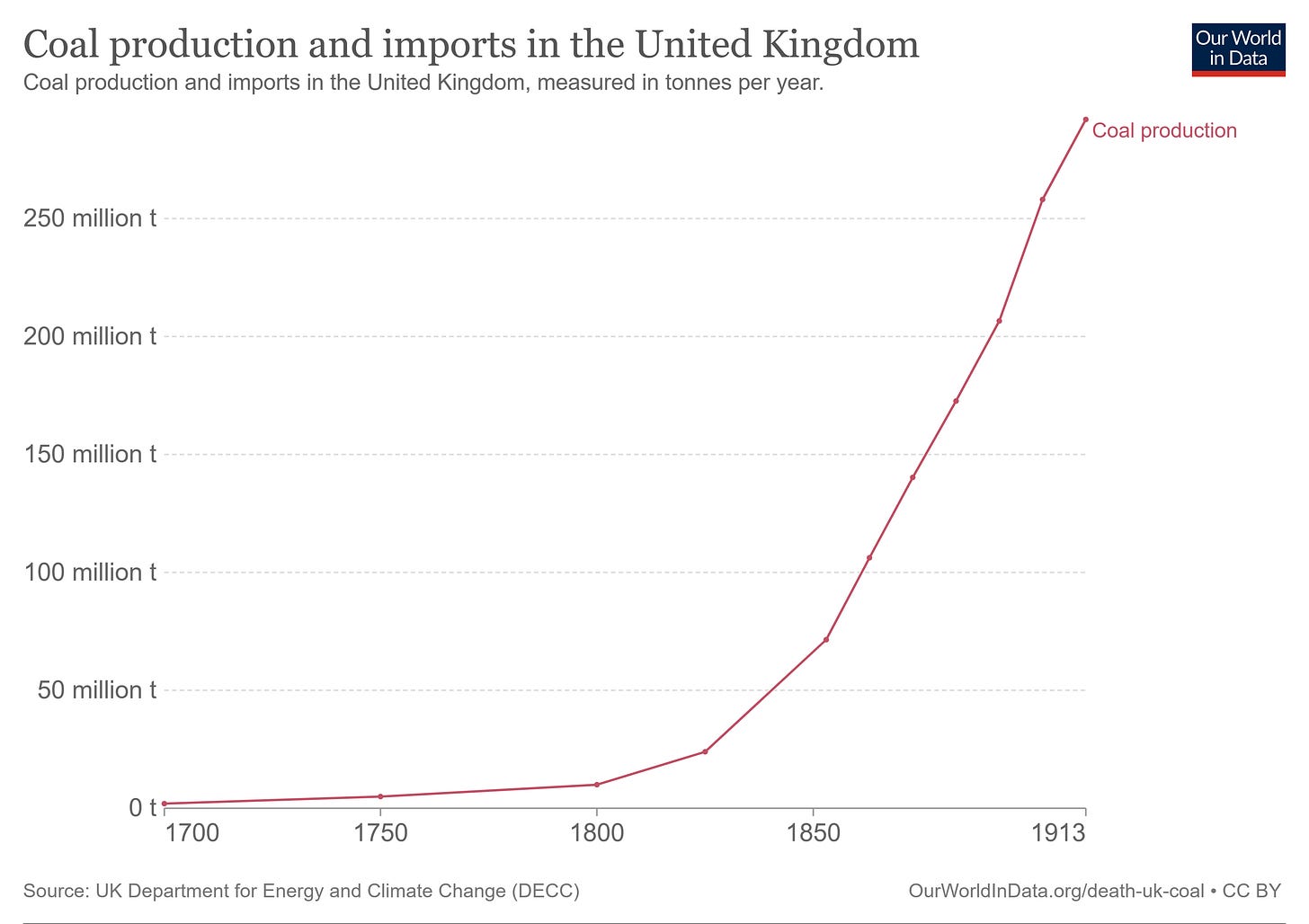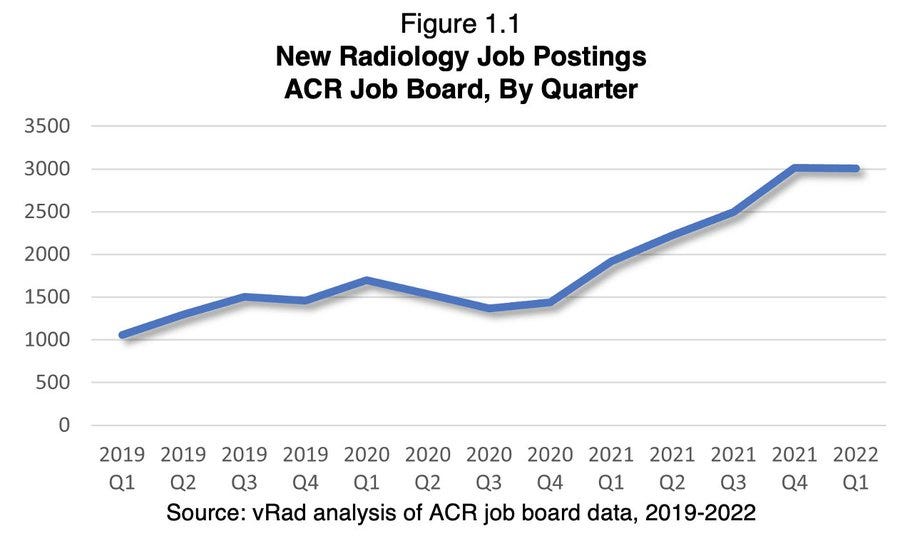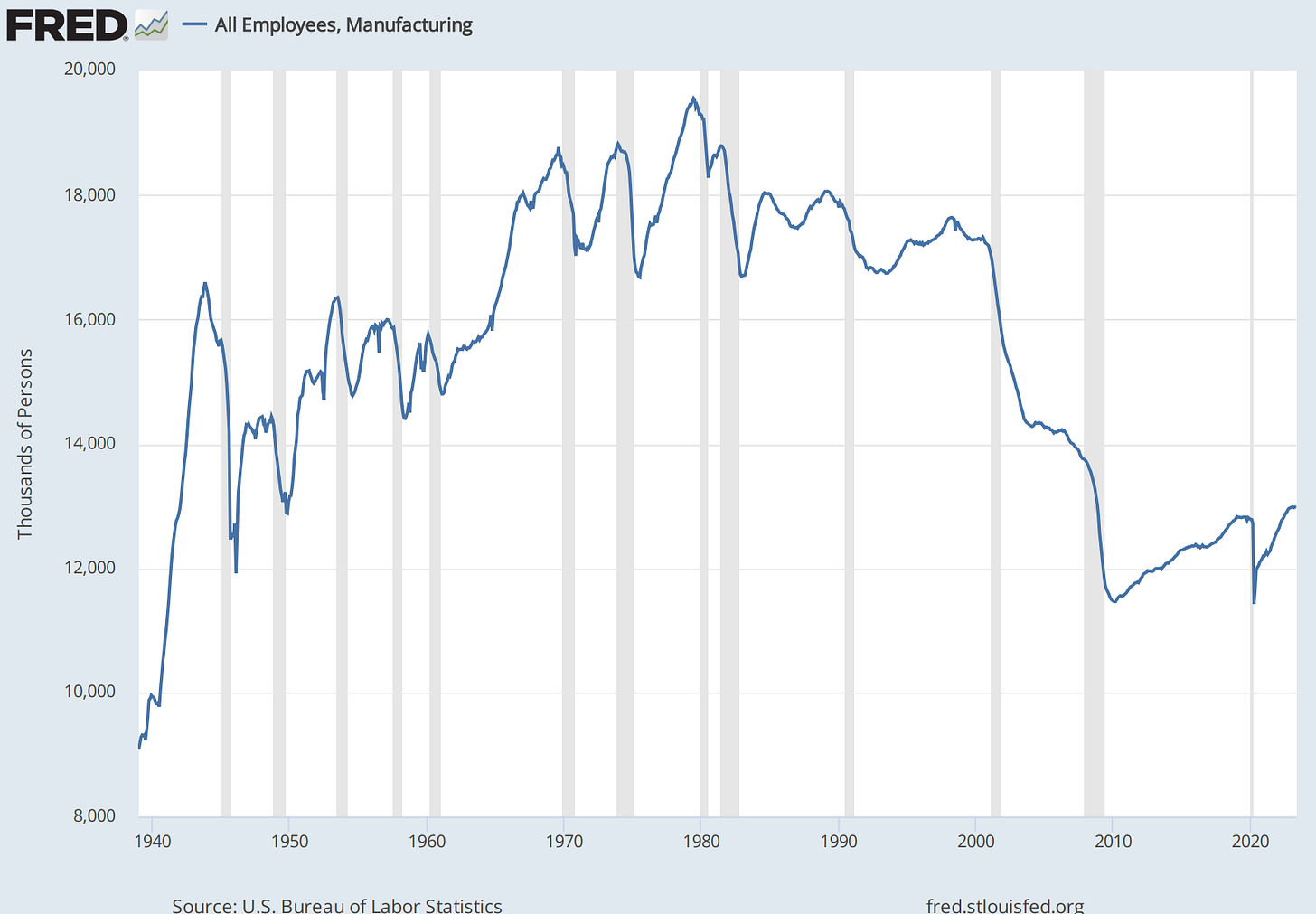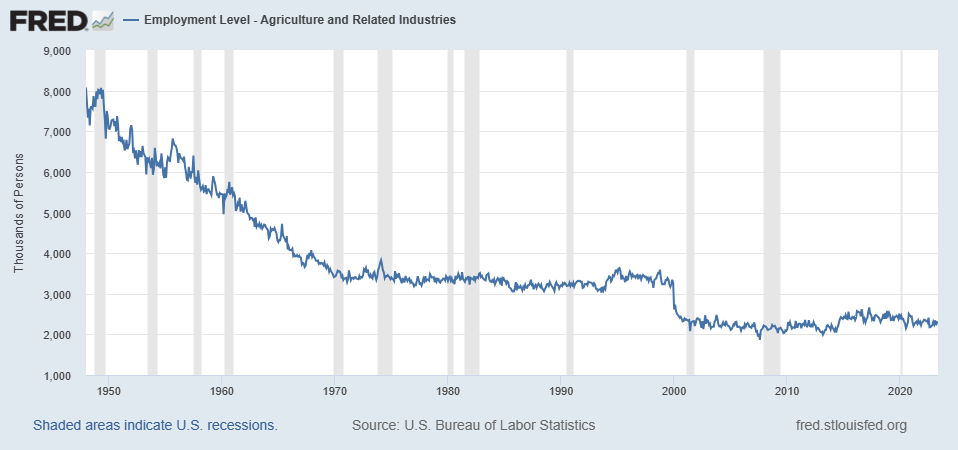Jevons Paradox and what it means for jobs | Signals from the frontier | Deeptech reads | Deeptech deals

13 JUN 2023
Will AI augment us, making us more productive and increase standards of living? Or will AI replace us and put many of us out of work? As a General Purpose Technology it looks like the answer maybe yes to both!
But to understand the future it is always a good idea to look for similar echoes in the past. And one particular echo, that of Jevons Paradox, can give some insights into the shape of things to come.
Thanks for reading Deep in the Chasm! Subscribe for free to receive new posts and support my work.Subscribe
Jevons Paradox
William Stanley Jevons formulated his paradox whilst investigating the impact of the first industrial revolution.
The industrial revolution was underpinned by 150 years of exponential improvements in the power and efficiency of steam engines driven by technological breakthroughs by Savery (1698), Newcomen (1710), Watt (1769) and McNaught (1845).
But in looking at the demand for coal that powered these machines, Jevons was surprised to see that whilst steam engines had become massively more efficient, coal consumption had actually increased rather than decreased.

Jevons pondered why an increase in efficiency led to an increase in resource use. We now know the answer:
- Improved efficiency reduced the relative cost of coal which resulted in increased demand
- The lower cost of operating steam engines meant that steam engines could be deployed in new use cases, again increasing demand for coal
- Improved use of steam engines promoted economic growth, further increasing the demand for coal
To the bane of environmentalists today, Jevons showed that energy efficiency could not be relied upon to reduce resource use. But this paradox can be generalised to apply to any process improvement.
Jevons Paradox Applied To Jobs
So let’s consider the impact of AI on jobs through the lens of Jevons Paradox:
- AI increases the productivity of labour
- In a competitive market, higher productivity results in lower prices and/or higher quality products and services resulting in higher demand
- Higher productivity also results in lower relative costs and increased demand through new found use cases, applications and markets
- Higher productivity promotes broad economic growth further increasing demand
- Increased demand results in higher employment levels
Just in the same way that increased steam engine efficiency resulted in increased coal demand, increased productivity will result in increased demand for workers. And there is historical data to back this view up.
The ATM was invented in 1967 automating many functions and making retail banking much more efficient. That allowed the average urban bank to cut its human tellers from an average of 21 to just 13. But that reduced the cost of running a branch and banks reacted to this by opening more branches. The number of branches increased enough to offset the reduction in human tellers per branch. The result, higher numbers of people employed in bank telling.
More recently, AI is being applied to help detect potential diseases in x-rays. Computer vision and anomaly detection is something that computers now do extremely well and with enough data they can perform at above human levels of performance. But what’s happening to all those human radiologists? They are finding employment in record numbers!

A big factor here is that most jobs are complex. Yes, AI can automate one task of the radiologist making them more productive. But a radiologists job is so much more than just looking for anomalies on x-rays and as the detection of anomalies becomes automated the needs for more humans to do the other tasks increases.
A Comforting Story?
This at first seems a comforting story. Higher productivity, more demand, higher employment and better standards of living for everyone? Unfortunately, there is a nuance to Jevons paradox that will play out differently in different industries.
In the case of energy, our demand seems almost insatiable. There is always more things we can light up, faster speeds we can travel, heavier loads we want to carry, and more computation we want to apply. Whilst there maybe short term bumps in the road, the long-term result is that increased productivity in energy will likely drive employment higher.
However, in many real world markets demand can be satiated. Food is an example. Whilst many people are probably eating more calories than they should, we can only eat so much. Likewise, once you have a flat screen TV in every room in the house it is unlikely you will buy another one.
This is one of the reasons why manufacturing employment has stagnated. Yes, productivity has increased but demand for much of what is now produced is close to saturation and further productivity increases thus lead to lower employment.

Understanding Technological Disruption
We can now have a more complete picture of how technology impacts demand for labour:
- Technology increases labour productivity
- In a competitive market, this will increase demand for that product or service
- Employment will increase until the point at which demand begins to become satiated
- At that point, employment will start decreasing
After Demand Saturation
Now, this is not to say that it is all bad in the final stage. In fact, industries that have experienced that final stage already have turned out to be incredibly good for some people, it’s just that these markets tend towards greater inequality. With fewer people taking a larger and larger share of the gains.
Take agriculture. The average wages of farm labourers is low and employment has been trending downwards.

And yet, the average landowning farmer in the US has a net worth of $1,714,559. Over double the net worth of an average American! Not bad.
So when industry demand becomes saturated but productivity keeps growing, employment will fall, but some people are likely to do very well. My theory, based on what has played out in agriculture is that it comes down to control over the production constraint.
In farming, the supply of land is finite (and potentially falling due to over-farming and climate change). If you own farmland you control the constraint. Therefore you are able to capture a lot of the value created by increasing productivity. Meanwhile, if you don’t control that constraint your work becomes commoditised.
The production constraint will be different in different industries. It could be access to some asset, it could be some intrinsic knowledge, or it could be the network or connections that someone has control over. But control over this constraint is likely to drive the ability to capture the value creation of increased productivity.
So…
So what is the future of AI and employment. Well it’s complicated! But some general pointers are that:
- Many companies are still using Excel and paper based documents for many critical tasks so it will likely take a while before we see the full affects of generative AI play out4
- Many markets today are under-served. We could probably all do with more financial advice, legal counsel and medical care and so AI-enhanced productivity will likely increase demand for workers in these industries at least in the near term
- And in the long term? Well in the long-term statistics like GDP and unemployment may have less meaning in a world transformed by AI5
Dive Deeper
Other interesting reads on this topic:
- Working paper on Generative AI at work
- AI’s potential impact on productivity and growth: Generative AI could raise global gdp by 7 percent
- Creative jobs and generative AI: WEF Generative AI and Creative Jobs
Signals From The Frontier
A roundup of recent deeptech developments that have caught my eye:
- The energy transition is accelerating: https://twitter.com/DrSimEvans/status/1664148320380387329 meanwhile heatpump demand in the UK is accelerating: The ‘exploding’ demand for giant heat pumps – BBC News
- Robotics get a boost with large language model integration: Santiago on Twitter: We integrated ChatGPT with our robots. We had a ton of fun building this! and TidyBot: Personalized Robot Assistance with Large Language Models
- Chips are being put into humans brains: People Let a Startup Put a Brain Implant in Their Skull—for 15 Minutes. Meanwhile some people don’t want their brain implants removed: Doctors Remove Woman’s Brain Implant Against Her Will
- Space based power is becoming a reality: Scientists Beam Space-Based Solar Power to Earth for First Time
- A German spinout developing stellarator fusion technology (an alternative to the more standard Tokamak approach) lands funding to develop its prototype: German start-up wins initial funding for revolutionary fusion energy machine (FT Paywall)
- The human pangenome has now been released: Scientists release a new human “pangenome” reference
- Methanol Institute issues guide to use of methanol as a marine fuel: Methanol Institute issues first complete guide to methanol as marine fuel – Offshore Energy
- The Biden Administration goes all in on Hydrogen: Biden administration announces clean hydrogen goal to slash planet-warming pollution by 10% by 2050
- Toyota reveal their first hydrogen race car: Toyota Races World’s First Hydrogen Race Car To Promote Alternative To Electric Cars – In my classes I talk about the battle for technology platforms like VHS and Betamax, Minidiscs and MP3s, and more recently EVs vs fuel-cell cars. In 2014 Toyota split from Tesla to promote Hydrogen as the automobile fuel of the future but seem to have been on the wrong side of that bet so far. It will be interesting to see if they are able to prevail in the long term!
- Japan sets a precedent for IP rights in an age of generative AI: Japan Sets the Precedent for AI Copyright
- NASA achieves record breaking communication speeds with laser link: NASA’s Laser Link Boasts Record-Breaking 200-Gb/s Speed but maybe old hat as quantum communications become possible: Chinese scientists set new record in long-haul quantum communication. Meanwhile the Royal Navy is testing quantum sensors for navigation: Royal Navy’s experimental ship carries out first trial of quantum navigation system
- LLMs prove themselves as investors: ChatGPT Trading Algorithm Delivers 500% Returns in Stock Market – but for how long?
Deeptech Reads
- How to build a winning deep tech strategy
- Building a quantum safe future
- A roadmap for success with a national semiconductor strategy
- Why generative AI needs a human touch
- Distributing learning and 6G: Distributed Learning Meets 6G: A Communication and Computing Perspective
- Boeing’s approach to smart manufacturing: Smart Factories: A Look At Boeing’s Advanced Manufacturing Techniques
- Explanation of Neuralink and others working in the space: Elon Musk’s Neuralink Wants To Put Chips In Our Brains — How It Works And Who Else Is Doing It
- Additive manufacturing and the next frontier in designer materials =
- Vancouver airports digital twin
- Longevity research is accelerating: Reclaiming Youth – How Scientists Are Getting Around Muscle Aging
Deeptech Deals
- GiTAI raises over $28M for its lunar robots: Space robotics company GITAI brings in over $28M – The Robot Report
- IQ Capital raises $400M fund to invest in deeptech startups across the UK and EU: London-based IQ Capital raises €374 million to invest in transformative deeptech startups across UK and Europe | EU-Startups
- Boeing supports CO2 removal startup: Boeing Bets On Startup Equatic With Massive CO2 Removal, Hydrogen Deal (forbes.com)
Notes
When modelling the impact of technology on work, many economist, such as Carl Frey make a distinction between technology that augments labour and technology that replaces labour. In The Technology Trap: Capital, Labor, and Power in the Age of Automation Frey shows that the technological revolutions of the past 300 years have massively improved peoples lives but have also been incredibly disruptive in the short term. It’s a magnificent well-researched book full of insight which I would highly recommend for anyone wanting to dive deeper into the impact of technology on work.
See: What the Story of ATMs and Bank Tellers Reveals About the ‘rise of the Robots’ and Jobs – American Enterprise Institute
Average American farming household wealth taken from: Agriculture.com and for the average American household from: What Is The Average Net Worth Of Americans? – Forbes Advisor
Not to disparage Excel too much. It is an easy to use tool and with OpenAI’s collaboration it is likely to become extremely powerful over the years ahead. However, it is indicative of the poor state of many companies digital transformation efforts.
Listen to a great podcast with Nathan Labenz discussing this further – Nathan Labenz on How AI Will Transform the Economy – Future of Life Institute
